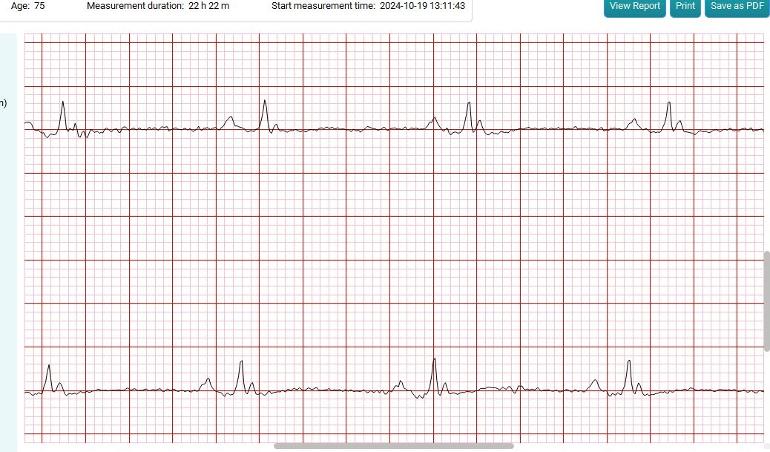My rabbit hole for today is QRS Duration.
Can people here offer an opinion on what the QRS durations are for the tracings above?
The "paper settings" are 10 and 25.
This came from my Wellue 24-hour monitor.
I am thinking that Q is rather hard to nail down. I have read that Q is the first downward deflection after P, but to me -- especially with regard to top row, third from left -- Q could be in two or three places.
Here's a larger image that's on my ftp site:
